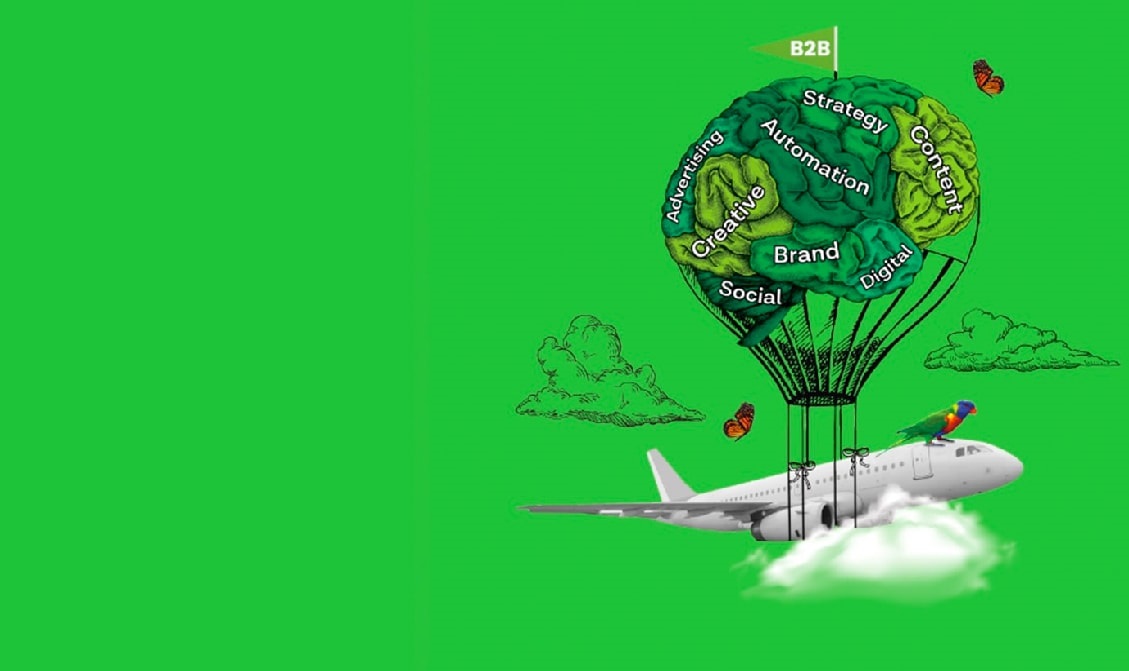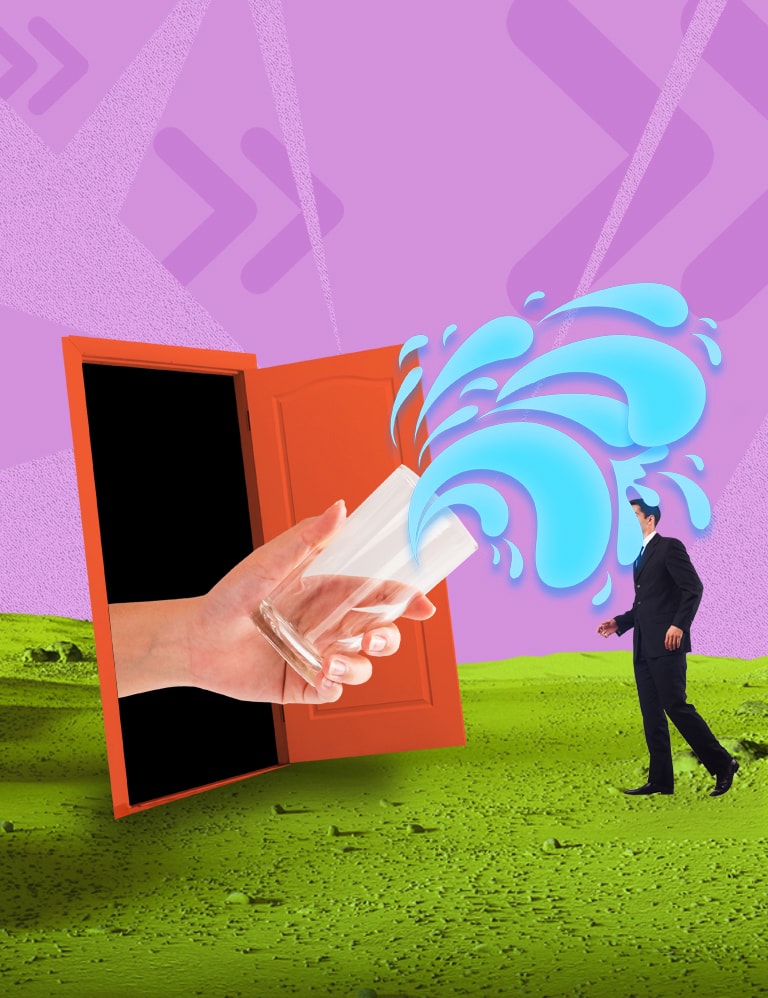*This article originally appeared in the Australian Business Executive.
B2B marketing has changed significantly over the past few years, as B2B buyers have changed the way they buy. For B2B marketers to keep up with the evolving market, the key to success lies in changing the way they sell and adapting to digital disruptions in the buying process.
But what are the key issues stopping the B2B C-suite from making these changes?
How is B2B different from B2C?
What are the fundamental differences between the B2B and B2C buying processes? In simple terms, the B2B process is a ‘considered purchase’ and B2C is an ‘emotional purchase’. There are three key differentiating characteristics in B2B buying.
Firstly, the B2B journey takes more time. We often say three months to three years as it can take many months to influence the buyer in making the purchase. This is compared with B2C, which is often driven by impulse.
Secondly, there are typically multiple people involved in B2B decision making. For example, a firm investing in a new business management software system will usually require inputs and buy-in from finance, IT, operations, sales and procurement. It will then require sign-off from the CEO or COO. Industry analysts report an average of four to six people are involved in B2B purchasing decisions. To compare, B2C is often a single person.
And lastly, the average expenditure is greater in B2B – often significantly. The investment, and associated risk, is higher.
There are, of course, exceptions to the rule. Buying a home, a car, or a tertiary education are examples of B2C ‘considered’ purchases. They take time, involve proportionally more investment, and can have multiple stakeholders in the decision process.
A single factor has changed everything in B2B engagement
The most significant factor that has transformed how B2B sellers interact with B2B buyers is ‘information access’. Buyers are now connected to a vast searchable global information repository (aka ‘The Internet’) with a simple finger-touch or voice-command, they can research solutions to their problem, find others who have had a similar problem, compare solution options reported by peers, and importantly, find vendors who have successfully solved the problem… without having to talk to them.
As Francis Bacon famously said, “knowledge is power.” In the world of B2B, information (the precursor to knowledge) is also power. Control of the buying process has clearly passed from the seller to buyer in the B2B information economy. The buyer has become more self-sufficient and is finding answers through ‘word of mouth’, albeit virtually and not physically.
B2B buyers now engage sellers later in their buying process – much to the anguish of the seller. The ‘engagement lag’ duration varies between industries and is reported as up to 90% of the journey by some analysts. Research also suggests B2B buyers are often reluctant to engage salespeople and will avoid this part of the process if they can.
The new B2B engagement model
So how can B2B sellers respond? They need to realise the new relationship flow is for buyers to find them, as opposed to relying on their sales teams to find their customers.
Sellers need to re-engineer their engagement model based on a clear understanding of the customer buying journey and the definition of their different types of buyers (commonly called ‘personas’).
An effective starting point is to develop customer journey maps that provide a visual, unified, narrative journey of your customer’s interactions with your company. These provide the human layer to data currently being collected about the customer, helping to identify customer challenges, needs and emotions, and providing valuable insights for the seller.
For the seller to attract the buyer, online content needs to be designed around what matters to the buyer – that is, what keeps them up at night! – it’s not about the seller. This is early-stage content to be found by the buyer who has a problem or challenge on their mind.
The seller needs to ‘fish where the fish are!’. The digital team must ensure search engines (namely Google) rank the authority of the content highly and, as a result, make the content readily discoverable by customers and prospects.
In the early phase of the B2B journey, the ‘Awareness Stage’, the buyer is typically developing their understanding of their problem and the situation. At this stage, the buyer is not interested in information about the seller’s companies, its products or services. The customer’s interest needs to be nurtured to keep the seller’s brand front-of-mind as they move into the next B2B journey phase – the ‘Consideration Stage’.
The buyer is now considering options to solve their problem and investigating the providers who could potentially help. The seller needs to present their capability online and deliver value, without the hard sell. Industry analyst Forrester Research* found on average the B2B buyer uses 14 information sources in their decision-making process. In the world of digital engagement, if your content isn’t at least one of these sources, there is a low probability of winning the heart and mind of this new buyer.
The new ‘P’ that matters most – personalisation
Phillip Kotler, often touted as the father of Modern Marketing, popularised the notion of the four Ps. Price, promotion, place and product. While these are all still relevant, the new P on the block is ‘Personalisation’.
Personalisation is the science of one-to-one marketing. It relies on the effective use of data collected about the customer to personalise the experience, message and content presented to them.
Mass marketing is dead – or, at best, on life-support. Interruptive communications tactics, such as cold calling and unsolicited emails, are ineffective. A key contributing factor is the rise of millennials in purchase decision-making positions within the industry. This group want to engage digitally, including using social media, and they use the Internet extensively in their research.
Learn more about why B2B marketers need to focus on personalising website experience.
Marketing communications that are contextual and relevant to a personal need, problem or even stage in the buying process get more cut-through. Marketing technologies allow us now to track and personalise the buyer’s website visits, emails, social media advertising and re-targeted advertising across a myriad of website networks.
As we build programs to reach our buyers online, effective personalisation will motivate the prospective customer to not only look but to also click. And the ‘click’ in the digital era is a valued ‘touch’ in the new engagement model.
Will B2B sales teams become redundant?
So, what is the role of the B2B sales representative in this new era? One might think it is somewhat tenuous when we consider the B2B buyer’s behaviour. Not only are buyers delaying their engagement with sales, but they also prefer to fulfil their requirements online as opposed to meeting the sales rep where possible.
Clearly, the role of the B2B salesperson is under threat. Forrester Research has predicted one million B2B sales reps will be displaced by 2020.
However, it should be noted, B2B solutions are complex, need time to evaluate and often need representatives to assist – albeit later in the buying process. In some B2B industries, trust and credibility are paramount before the purchase can be secured. Human-to-human relationships provide the basis for this trust. A telecommunications brand like Telstra will have a close business relationship with its IT providers to ensure uptime of its network. A FMCG brand like Kellogg’s will have a close working relationship with its food services suppliers to ensure consistent quality supply of raw materials. These B2B deals can often require substantial investment and require valued sales-to-customer relationships in place to consummate and sustain them.
Companies that recognise their buyers have changed are more likely to recognise the importance of aligning their sales and marketing functions to capitalise on this new customer engagement model. Given they understand their customers will now be finding them (and not the other way around), they will re-engineer their lead lifecycle marketing model to optimise the process.
Marketing, in fact, will often be the first to identify the new visitor or prospect and will have the responsibility to draw them into the sales and marketing (or ‘smarketing’) funnel. Both teams need to work collaboratively on the new lead management process and become a unified force. Therein lies an internal change management challenge itself, but represents a real opportunity to drive growth.
Where to from here?
Our B2B world is continually being disrupted by digital technologies. That reality continues to gather momentum.
The marketing engagement model has been morphing into an information self-serve universe for B2B buyers as the quality and discoverability of content has improved. Buyers will ask for peer recommendations from their professional contacts and social networks. They are often better informed than sellers, as they deeply research a range of options, whereas an introspective seller will wallow in its own world of products and services.
The new imperative for B2B leaders is to ensure there is clarity of the customer journey within their organisations and that they re-engineer the way they sell to optimise their customer experience and their business outcome.
The B2B seller’s own journey will require transformation; digitally, organisationally and culturally. It will require an internal alignment of skills, process and technology to optimise the customer engagement at each touchpoint and bring together the frontline forces of sales and marketing into a tightly-integrated team that recognises their buyer’s journey has changed forever.
*Forrester Research, Business Technographics Global Priorities and Journey Survey, 2015
.png)
 Strategy
Strategy






